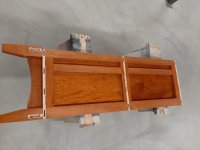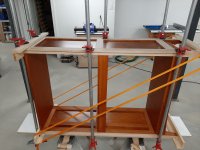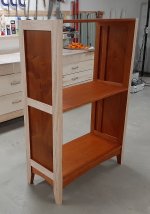- Joined
- Feb 22, 2016
- Messages
- 3,014
Titebond makes a hide glue.
Application Guidelines
Application Temperature: Above 50°F (10°C)
Open Assembly Time: 10 minutes (70°F./50% RH)
Total Assembly Time: 20-30 minutes (70°F./50%RH)
Minimum Required Spread : Approximately 6 mils or 250 square feet per gallon
Required Clamping Pressure: Enough to bring joints tightly together (generally, 100-150 psi for softwoods, 125-175 psi for medium woods and 175-250 psi for hardwoods)
Method of Application: Can be applied by roller or dip spreader, pressurized oil cans, plastic applicators, brush or stick.
Cleanup: Damp cloth while glue is wet. Scrape off and sand dried excess.
Application Guidelines
Application Temperature: Above 50°F (10°C)
Open Assembly Time: 10 minutes (70°F./50% RH)
Total Assembly Time: 20-30 minutes (70°F./50%RH)
Minimum Required Spread : Approximately 6 mils or 250 square feet per gallon
Required Clamping Pressure: Enough to bring joints tightly together (generally, 100-150 psi for softwoods, 125-175 psi for medium woods and 175-250 psi for hardwoods)
Method of Application: Can be applied by roller or dip spreader, pressurized oil cans, plastic applicators, brush or stick.
Cleanup: Damp cloth while glue is wet. Scrape off and sand dried excess.




